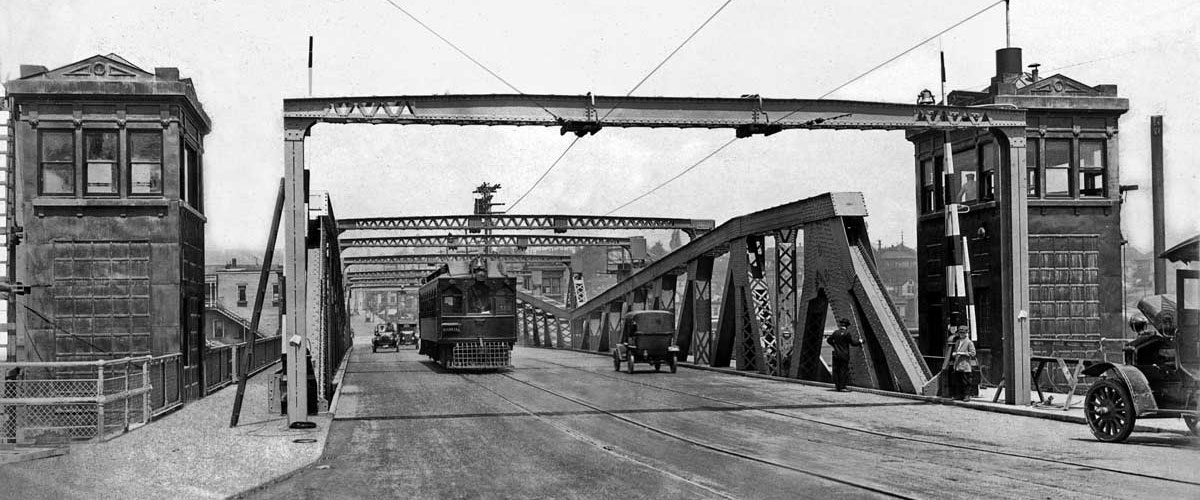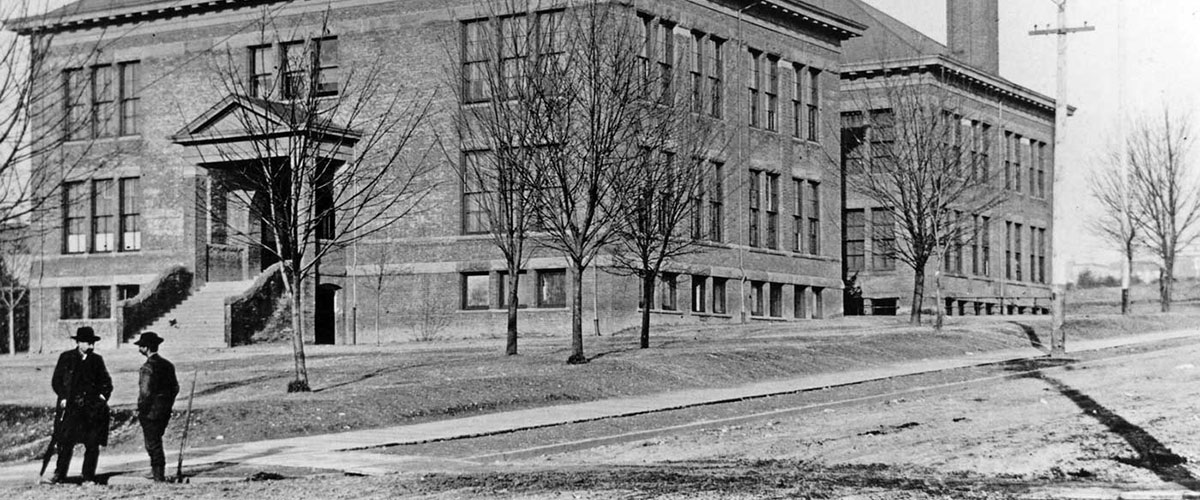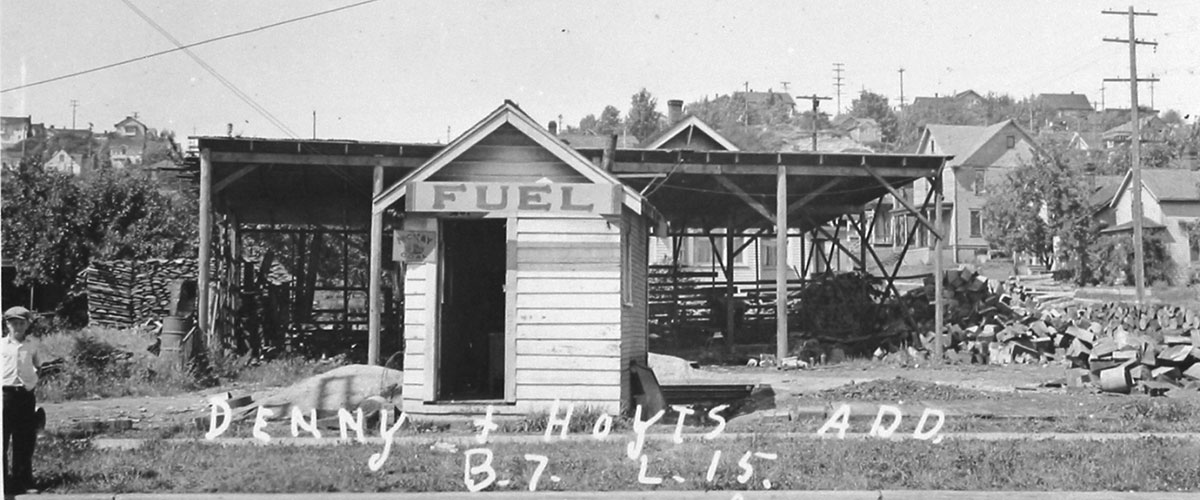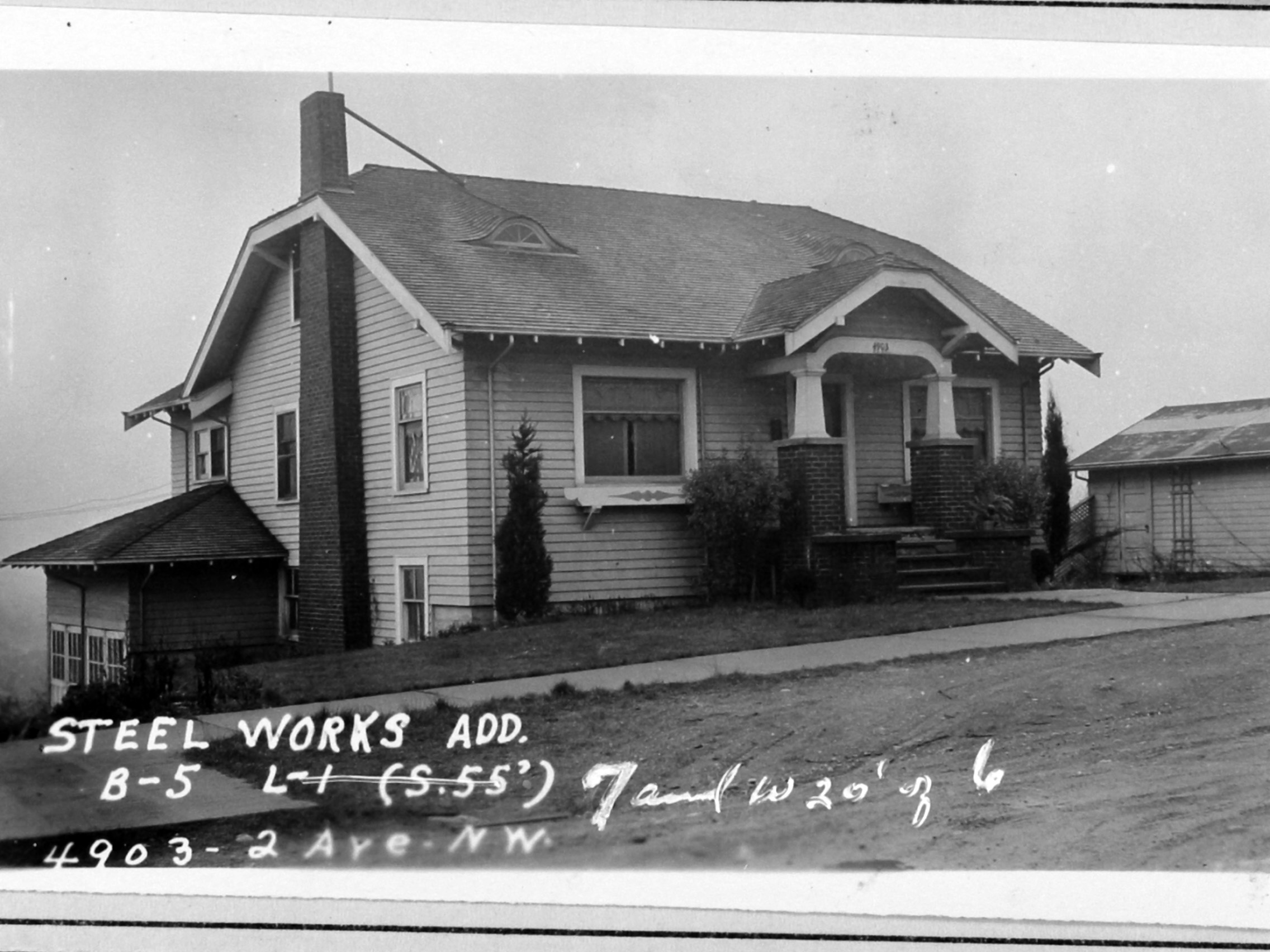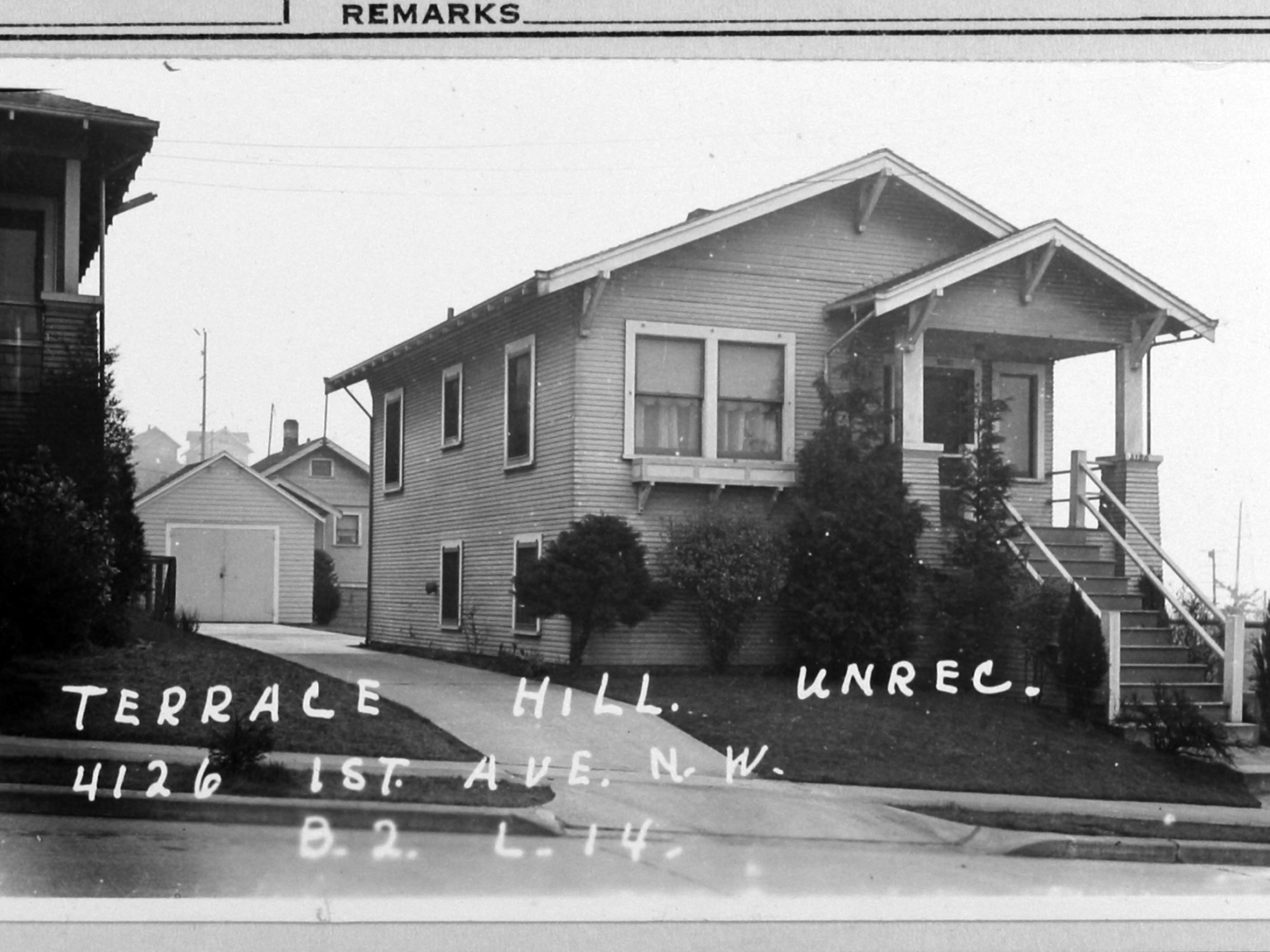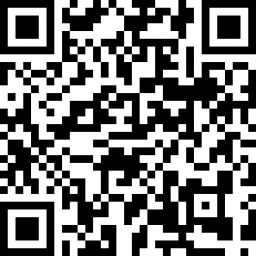Fremont History Articles
The lights are on again at the “Interurban.”
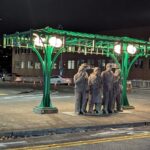
The Waiting for the Interurban statue is at the intersection of North 34th Street and Fremont Avenue. It memorializes the former rail line, called the Interurban, which went northward through Fremont to the city of Everett. This transfer point at the intersection, where City of Seattle streetcar lines also converged, did much to give Fremont the reputation of being the “center” of things, the Center of the Universe.
The Interurban statue was created by Richard Beyer in 1978 and in 1979 Peter Larson was commissioned to add a pergola with lights.
The Hall of Giants: The Story of Fremont and the Troll
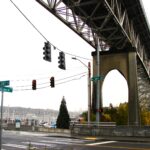
In 1990 the Fremont Arts Council sought proposals for a vacant area on North 36th Street which was directly underneath the Aurora Bridge. Immediately the folktale of the troll beneath the bridge came to mind, and this design proposal won acceptance.
The Fremont Troll became so popular that in 2005, the City of Seattle changed the name of the north-south avenue leading to it, to Troll Avenue. This made it much easier for visitors to Seattle to find the Fremont Troll.
Who was B.F. Day?
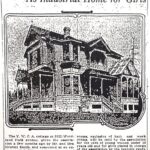
Benjamin Franklin Day was 45 years old when he and his wife Frances arrived in Seattle in the spring of 1880.
Born in Ohio, B.F. Day had farmed in Illinois, Iowa and Missouri. Biographical notes indicate that Day wanted to leave farming because of the hard physical labor. We don’t know why he chose to come to Seattle, but as a former farmer who had raised corn & hogs, B.F. Day would have known the importance of railroads in moving products to market. In the 1870s-1880s there was constant speculation about railroad routes across the USA.
The Motorline Land Plats in Fremont
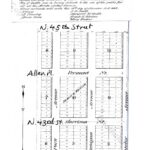
Fremont was opened in something like a land rush in the summer of 1888, when lots were first offered for sale. The original area of the landowners was from Florentia Street on the south side of the Fremont Bridge, as far north as North 39th Street. Outside of that area, beginning in 1888 other property owners rushed to have their land surveyed and laid out in lots to sell. A cluster of different landowners began naming their sites “Motorline”
Fremont in 1893
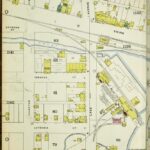
The Sanborn Insurance Company produced this map in 1893, showing the main business intersection of Fremont. For fire insurance purposes, the map was meant to show whether structures were built of wood, brick, or masonry, and how close they were to other structures.
The street names shown here, are the original ones chosen by Fremont’s developers, before standardization by the City of Seattle. “Lake” is now Fremont Avenue, the cross-street “Ewing” is North 34th Street,
The Burke-Gilman Trail in Fremont
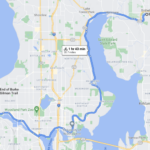
The Burke-Gilman Trail, a walking-biking corridor which passes through Fremont, is the legacy of early Seattle movers-and-shakers, Thomas Burke and Daniel Gilman. The energy and activism of these men characterized the era of the 1870s-1880s when the population of Seattle began to grow and the city sought to make something of itself. Burke & Gilman transformed the city with their promotion of transportation projects.
Early Seattleites had already noted that there was a creek flowing westward from Lake Union through what is now Fremont and on out to Puget Sound.
George Boman’s Edgemont Plat
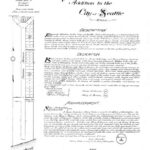
After the Civil War (1861-1865) war veterans began migrating westward, and some made their way to Seattle. George Boman from Tennessee arrived in Seattle in 1875 and became a real estate investor.
In Boman’s home state of Tennessee, during the Civil War some men enlisted to fight with the Union, and some enlisted with the Confederacy. Perhaps feeling that his life might be in danger because he had fought for the Union, Boman never went back home after the war.
C.P. Stone, Namesake of Stone Way
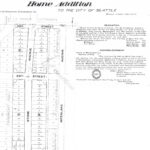
Corliss P. Stone was an early businessman, real estate investor, and civic activist of Seattle.
Stone was born in Vermont in 1838 and worked in what was called a dry goods store, meaning household supplies not including food. Some dry goods stores eventually evolved to sell clothing only.
As a young man Stone traveled to San Francisco to investigate the business climate and then he came to the Pacific Northwest. He worked for a time at Port Madison (north end of Bainbridge Island) which was the site of a lumber mill.
A House and an Auto Shop at 4031 Stone Way
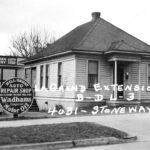
In the 1930s Stone Way still had private homes but was increasingly mixed with light industrial buildings, gas stations and auto shops. Willam Berry of 4031 Stone Way combined two categories: his family residence and his place of employment.
William Berry had been born in Illinois and came to Seattle as an eighteen-year-old in 1903, hoping to find employment in what he had heard were Seattle’s good economic conditions. William was on the early,
A House and a Barber at 3521 Stone Way
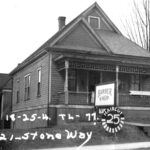
In the 1930s in Seattle there were fewer zoning restrictions, so there were streets which had some businesses mixed in with private homes. The 1938 photo collection of King County showed this house at 3521 Stone Way with a barber shop sign in front of the house. There was a gas station next door at 3525 Stone Way. In the 1930s Stone Way began this transition to all-commercial structures so that there are no houses on Stone Way now.
Charles H. Baker: Land Investor of the Palatine Hills plat in Fremont
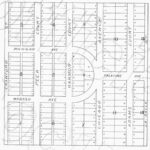
The Fremont neighborhood has a lively history which parallels the story of the City of Seattle’s growth and development. Just as in the beginnings of Seattle in what is now downtown, the earliest white settlers of Fremont were attracted by the availability of natural resources, most importantly water and timber. As Seattle grew, land investors hoped that a railroad would come through their property, which would increase the value.
Located just to the northwest of Lake Union,
The Ross and Fremont Post Offices
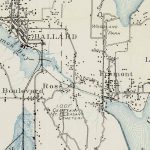
Some Seattle-area neighborhoods, like Bothell, were named for early settlers. With the arrival of the Seattle, Lake Shore & Eastern Railroad in 1887, a railway station could give its name to the neighborhood.
Just north of Seattle’s Queen Anne hill, the Ross family had land claims on both sides of a stream called The Outlet, which flowed from Lake Union westward out to Puget Sound. The Ross family gave permission for the new railroad to come across their property and the railroad planners named a station in their honor.
Plats of Fremont
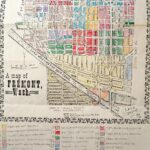
One of the ways to trace neighborhood history is by its land use, including plats of land laid out with streets and house lots. This map of the Fremont neighborhood in Seattle is marked with plats and their names.
The founding of Fremont in 1888 was in the area closest to the ship canal, although at that time it was only a small stream called The Outlet. The plat, which was named Denny &
The Sunset Heights Plat in Fremont
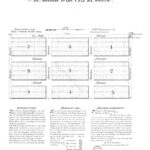
In 1871 in Norway, 21-year-old Oline Anrud married Hans Onsum, and the couple set out to start new lives in America. They touched down briefly in Wisconsin before continuing the westward journey to Seattle in Washington Territory.
In the 1870s and 1880s the couple spent some time in Seattle, where Hans had a meat market, and some time in rural Snohomish County. Perhaps Seattle’s Great Fire of June 6, 1889, made the couple decide that they would settle in the city where explosive population growth post-Fire,
House History: 4202 Phinney Ave North
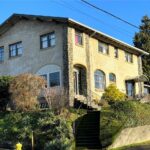
Captain Herbert E. Farnsworth made the classic Western migration of a Civil War veteran after the war. Born in New York State, after the end of the war in 1865, Captain Farnsworth married. The Farnsworth’s first daughter was born in New York and by the time of the birth of their second daughter in 1871, the family was living in the town of Kidder, Caldwell County, Missouri. It was a railroad town and Captain Farnsworth, who worked as a carpenter,
The Fremont Neighborhood in Seattle is Founded in 1888
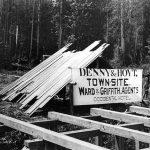
Each neighborhood of Seattle proudly waves the banner of its unique name, and yet many were named in a similar way: by real estate investors. Fremont in Seattle was also named by real estate investors. What made the Seattle neighborhood called Fremont stand out from others, was its good location, its jump-start after Seattle’s Great Fire of 1889, and its vigorous developers who utilized the growing streetcar system to advantage.

